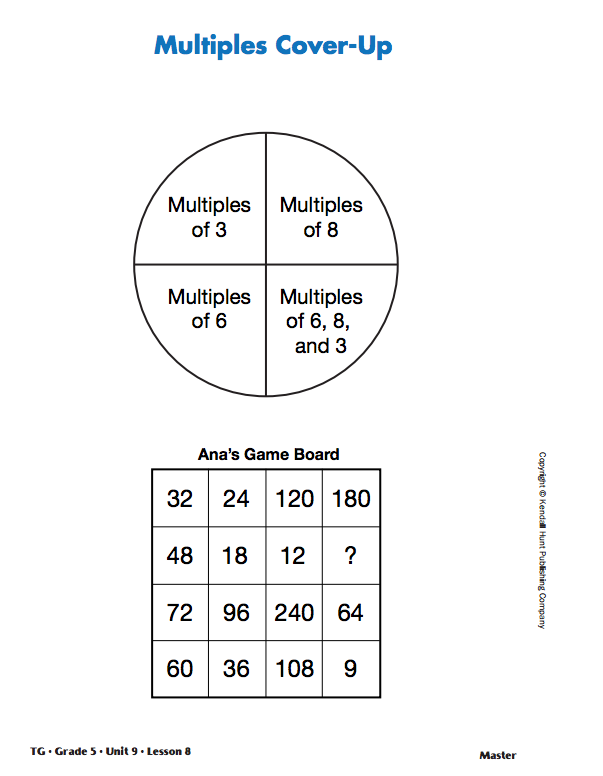Display the Multiples Cover-Up Master in the Teacher Guide and direct students to study the spinner and Ana's Game Board with their partner. After several minutes, use these or similar prompts to begin a discussion.
Encourage students to discuss each question with a partner before sharing their thinking in class:
- If the Caller spins “Multiples of 3” for the first spin, what numbers can Ana cover on her game board? (24, 180, 120, 48, 18, 12, 72, 96, 240, 60, 36, 108, 9)
- After the first spin, Ana decided to cover 24 on her game board. Is this the best move? Explain why or why not. (Possible response: No, this is not the best move because 24 could be covered no matter what the Caller spins. Ana should cover the 9 because it can only be covered if the caller spins “Multiple of 3.”)
- If the Caller spins “Multiple of 8” for the second spin, what numbers should Ana cover on her game board? (32 or 64) Explain your thinking. (32 and 64 are not multiples of 6 or 3 so they can only be covered if the Caller spins Multiple of 8.)
- Are any numbers on Ana's game board multiples of 6 but not of 3 or 8? (no)
- Ana forgot to fill in one space on her game board. She decided to put the number 52 in this space. Is this a good choice? Why or why not? (Possible response: No, this is not a good choice because 52 is not a multiple of 3, 6 or 8.)
As time permits, ask students to create a new spinner and game boards to play Multiples Cover-Up.
The Multiples Cover-Up game can be used to meet the needs of different students by changing the number of possible outcomes on the spinner. See Figure 2.
The teacher can also assign the numbers that will be used in a game to change the complexity of the play.














